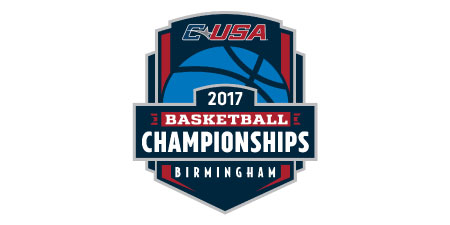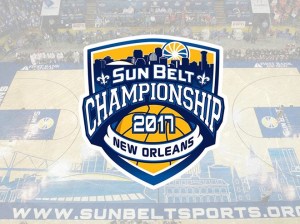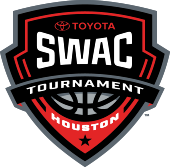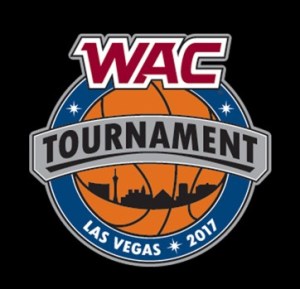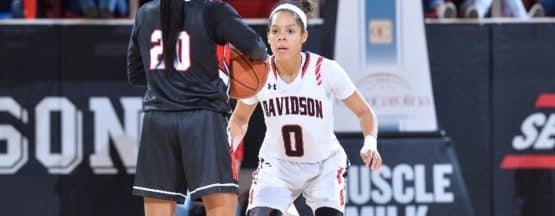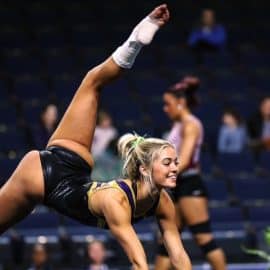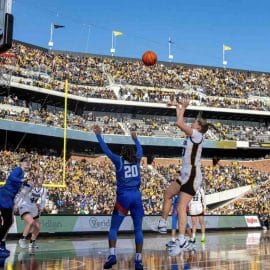<![CDATA[The second week of Conference Tournament action is upon us. The 12 remaining Mid-Major conferences and the 6 Major conferences will enter Tournament play for the right to earn an automatic bid to the NCAA Tournament. This year's field is oriented towards the major conferences as very few Mid-Major leagues have a top-end team capable of earning an At-Large bid. The Atlantic 10 has a few teams hovering right around the bubble and Middle Tennessee State could garner consideration if they don't win the C-USA Tournament. Conference Tournament play will be a huge factor in determining which teams ultimately earn the last few spots in the Field of 68. With the first set of tournaments drawing to a close, stay up to date on who has locked up their place in the field with my Conference Tournament Tracker. Also, if you’re so inclined, check out my projected NCAA Tournament Bracket.
Atlantic 10
Pittsburgh
March 8-12
Top Seeds: Dayton, VCU
Sleeper: Davidson
Tournament Format: All 14 teams qualify. Top 4 seeds get byes to the quarterfinals. Bottom 4 teams play play-in games.
Recent History: The winner of the 4-5 quarterfinal has gone on to win the A-10 Tournament in 4 of the last 5 years. VCU has reached the A-10 final in each of the last four years but has only won the tournament once in that span.
Preview: Dayton should feel fairly safe in their At-Large chances if they fail to win the A-10 Tournament. The Flyers had run off 9 straight wins before stumbling against George Washington in the season finale. VCU and Rhode Island are both hovering around the bubble and will need deep runs in the tournament to feel safe on Selection Sunday. After seemingly demolishing their bubble hopes with a home loss to Fordham, Rhode Island rattled off 5 straight wins (including one over VCU) to close out the season. Davidson boasts two of the top 3 scorers in the conference in Jack Gibbs (22 PPG) and Peyton ALdridge (20.6 PPG). Davidson leads the league in scoring (79 PPG) while Rhode Island has the stingiest defense (60.2 PPG). VCU does not play the same HAVOC defense they did in the Shaka Smart days but have a capable offense and have been very good defensively this season and are capable of making a fifth straight championship game. Richmond took advantage of an easier schedule and finished 3rd in the league but is not close to an At-Large bid. Rhode Island may need to beat Dayton in the semi-finals to feel secure about their spot.
Big Sky
Reno
March 7, 9-11
Top Seeds: North Dakota, Eastern Washington
Sleeper: Weber St, Montana
Tournament Format: Northern Colorado is ineligible so 11 teams qualify. 3 play-in games between the bottom 6 teams in the conference, followed by a normal bracket.
Recent History: Weber St and Montana have historically dominated the Big Sky Tournaments. Over the last 12 years they have combined for 15 Big Sky Championship Game appearances and have won 8 of the titles. Montana has won 5 of the titles and Weber St 3 but the Wildcats have won the conference in 2 of the last 3 years. Montana has reached the Championship in 6 of the last 7 years and Weber St in 5 of the last 7.
Preview: According to KenPom.com, four Big Sky teams are ranked within 10 spots of each other. This should make for yet another close and competitive tournament. Weber St, Montana, and Eastern Washington all play slow slogging styles while North Dakota plays an up-tempo game. Five teams finished within 3 games of first place North Dakota. This figures to be a high-scoring tournament as North Dakota, Eastern WAshington, Weber St and Montana St all average nearly 80 points per game. Eighth place Portland State was 6th in the nation in scoring (86 PPG) but could not defend and was one of the 20 worst defenses in the nation, allowing 81 PPG. Southern Utah’s Randy Onwuasor and Montana State’s Tyler Hall led the league in scoring at 22.8 PPG while Eastern Washington featured a pair of forwards (Bogdan Bliznyuk and Jacob Wiley) who both averaged over 20 points and 6 rebounds per game.
Big West
Anaheim
March 9-11
Top Seeds: UC Irvine, UC Davis
Sleeper: Long Beach State
Tournament Format: 8 teams in a normal bracket.
Recent History: Over the last 9 years, 8 different teams have won the Big West Tournament. The only repeat champion was UC-Santa Barbara in 2010 and 2011. The only team in the league not to reach the Big Dance in that span is UC Riverside who has never made the NCAA Tournament since moving up to Division 1 in 2001. The top seed has only won the Tournament twice in the last 6 years.
Preview: UC Irvine beat UC Davis by 30 in the season finale to win the Big West regular season title and get the top seed in the tournament. This is a down year for the Big West as only Irvine, Davis, and Cal State Fullerton enter the conference tournament with winning records. If Irvine doesn’t win the tournament, the conference champion is likely looking at a 16-seed and possibly a play-in game. Irvine is also the only team ranked in the Top 200 on KenPom.com.
Conference USA
Birmingham
March 8-11
Top Seeds: Middle Tennessee, Louisiana Tech
Sleeper: Western Kentucky
Tournament Format: All 12 teams qualify with the top 4 seeds getting byes to the Quarterfinals.
Recent History: Middle Tennessee won the C-USA Tournament last year and shocked the world in upsetting #2 seed (and tournament favorite) Michigan State. The top seed has not won the C-USA Tournament since 2013.
Preview: Middle Tennessee ran through the conference with a 17-1 record, their only blemish coming in a road loss to UTEP. Unfortunately, the rest of Conference USA has not been as good as the Blue Raiders and 4th place UTEP has an RPI in the 250s which looks awful on MTSU’s resume. The Blue Raiders will be squarely on the bubble if they fail to win the C-USA Tournament. MTSU plays at one of the slowest paces in the nation but also ranks in the top 65 in both offensive and defensive efficiency. Old Dominion also plays at a stiflingly slow pace and has held their opponents to just 61 points per game. Rice and Marshall both average over 80 points per game but neither can play defense. Marshall ranks in the Top 6 in the nation in scoring but the Bottom 6 in the nation in points against. In the end, this is MTSU’s tournament to lose and they may need to win it to secure their spot in the field as the Selection Committee has not been kind to Mid-Majors in the last few years.
Ivy
Philadelphia
March 11-12
Top Seeds: Princeton, Harvard
Sleeper: Penn
Tournament Format: Only the top 4 teams qualified. There is a normal bracket for the four teams.
Recent History: This is the first year the Ivy League is hosting a conference tournament. Previously, the regular season league champion was awarded the automatic bid.
Preview: Princeton ran undefeated through the regular season of the Ivy League and won the League by 4 games. However, the story right now is Penn, who started conference play 0-6 but then won 6 of their last 8 (including a win in the season finale against Harvard) to sneak into the 4th and final playoff spot. Penn is also hosting the conference tournament at The Palestra, so the Quakers will have a home court advantage in their semifinal against rival Princeton. Yale is the defending champions and will face rival Harvard in the other semifinal.
MAC
Cleveland
March 6, 9-12
Top Seeds: Akron, Ohio
Sleeper: Ball St
Tournament Format: All 12 teams qualify with the top 4 (based on conference record) receiving a first round bye.
Recent History: Buffalo is the two-time defending Champions. One of the top 3 seeds has won each of the last 5 MAC Tournaments.
Preview: Akron ran out to a big lead in conference play, winning their first 9 and peaking at a 12-1 MAC record in mid-February. From there, the Zips lost 3 of their last 5 including losses to 10th place Bowling Green and 12th place Miami. This figures to be a high-scoring tournament with the nation’s leading scorer (Central Michigan’s Marcus Keene 29.6 PPG) and 8 of 12 teams averaging over 77 points per game. Ohio, Buffalo, Ball State, and Western Michigan finished in a 4-way tie for second place that took 3 rounds of tiebreakers to sort out. Defending champion Buffalo and Ball State were the beneficiaries, getting first round byes while Western Michigan will have to play a first round game.
MEAC
Norfolk
March 6-11
Top Seeds: NC Central, Norfolk St
Sleeper: Hampton
Tournament Format: 12 teams with the top 4 receiving a first round bye
Recent History: Hampton has won the last two MEAC Tournaments.
Preview: North Carolina Central is the only MEAC team entering the tournament with a winning record. Second place Norfolk State finished at 15-15 and the other 10 teams were below .500 which almost certainly ensures a 16-seed for the MEAC Champion if it is someone other than NC Central. However, the Eagles trip to the Big Dance is not secure as they lost their last two games of the season to 5th place Savannah St and last place North Carolina A&T (one of just 3 wins by NC A&T all year). Savannah St is the hottest team in the league entering the tournament, winners of 3 in a row and lead the league in scoring at 85.7 PPG. NC Central is the only team in the league that has held opponents under 70 points per game this season. The MEAC doesn’t have a single team in the Top 200 of the RPI and features 7 of the Bottom 30 in the RPI.
Mountain West
Las Vegas
March 8-11
Top Seeds: Nevada, Colorado St
Sleeper: Fresno St
Tournament Format: All 11 teams qualify. Three play-in games followed by a normal bracket.
Recent History: The top seed has only won the Mountain West Tournament once in the last 9 years while the #2 seed has won the tournament 6 times in that span. The Mountain West has had one of the “first four out” each of the last two years.
Preview: The downtrend of Mountain West basketball continues. Just a few years ago, the conference was considered one of the best leagues in the nation. Now, it will be a one-bid league. Nevada won the league thanks to closing the season on a 6-game winning streak while defending tournament champions Fresno State won their last five. Nevada featured the best offense in the league at nearly 80 points per game. San Diego State has the league’s best defense but can’t score. Colorado St and Boise St have both been solid this season but were swept by Nevada. Nevada’s Marcus Marshall leadus the league in scoring at 19.7 PPG. Fresno State won the tournament last year from the #2 seed and the Bulldogs swept Nevada this year which could set up a dangerous semifinal for the top-seeded Wolfpack.
Southland
Katy
March 8-11
Top Seeds: New Orleans, Texas A&M-CC
Sleeper: Stephen F Austin
Tournament Format: The top 8 teams qualify with the top two seeds receiving double byes to the semi-finals and the #3 and #4 seeds receiving a bye to the quarterfinals.
Recent History: Stephen F Austin has won the last 3 Southland Tournaments but former head coach Brad Underwood is now at Oklahoma State. Since switching to the non-traditional bracket in 2013, one of the top 2 seeds has won all 4 tournaments.
Preview: With Brad Underwood gone from Stephen F Austin, the Southland has been a thoroughly unremarkable conference this year. New Orleans won the league by one game with a 3-way tie for second between Texas A&M-CC, Stephen F Austin, an Houston Baptist. New Orleans is the only Southland team in the Top 200 of KenPom’s rankings and only two teams (Houston Baptist and Lamar) average over 77 points per game. The conference champion is likely headed for a 16-seed as no team ranks in the top 150 of the RPI. Texas A&M-CC forward Rashawn Thomas led the league in scoring and rebounding with 21.7 PPG and 8.6 RPG.
Sun Belt
New Orleans
March 8, 10-12
Top Seeds: Texas-Arlington, Georgia St
Sleeper: Arkansas St
Tournament Format: All 12 teams qualify with the top 4 getting a first round bye.
Recent History: The Sun Belt had a non-traditional bracket the last 3 years where the top 2 teams got byes to the semifinals. The Sun Belt Champion has pulled a first round upset in the NCAA Tournament each of the last two seasons with Georgia State in 2015 and Little Rock in 2016.
Preview: UT-Arlington flirted with the At-Large conversation throughout the year after scoring a non-conference win at Saint Mary’s, but back-to-back losses to Troy and Texas St as well as a loss in the season finale to UL-Lafayette ended that discussion. The Sun Belt will be a one-bid league and was tightly contested at the top. Georgia State finished second, a game ahead of a 3-way tie between Georgia Southern, Texas St, and Arkansas St. Lafayette is the hottest team entering the tournament, winners of 6 in a row and lead the league in scoring at over 82 points per game. Georgia Southern features a dangerous pair of guards who finished atop the league in scoring (Ike Smith 19.9 PPG and Tookie Brown 17.5 PPG).
SWAC
Houston
March 8, 10-11
Top Seeds: Texas Southern, Alcorn St*, Southern
Sleeper: Prairie View A&M
Tournament Format: The top 8 teams qualify and play in a normal bracket.
Recent History: Texas Southern and Southern have split the last 4 SWAC Championships. One of the top 2 seeds has won in 7 of the last 9 years with the #4 seeds winning in the other two years.
Preview: For as bad as some of the other leagues in the country were this year, the SWAC continues to be the worst. Only two teams finished with a winning record and one of them (Alcorn State) is ineligible for the NCAA Tournament. Over the years, due to a number of teams struggling with eligibility, the SWAC has traditionally allowed teams ineligible for the NCAA Tournament to compete in the conference tournament. If Alcorn State wins the tournament, the conference’s bid will go to the farthest advancing eligible team, who will be the team they beat in the Championship Game. Texas Southern won the regular season title with just 2 conference losses and is the clear favorite heading into the tournament.
WAC
Las Vegas
March 9-11
Top Seeds: Cal State Bakersfield, New Mexico State
Sleeper: Utah Valley
Tournament Format: 7 teams qualify with the regular season champion receiving a bye to the semifinals.
Recent History: Cal State Bakersfield is the defending champions, qualifying last year on a buzzer-beating 3 that ended New Mexico State’s 4-year run as WAC Champions.
Preview: Cal State Bakersfield and New Mexico State split their head-to-head meetings this season and all signs point to a rubber match in the WAC Championship. With third place Grand Canyon ineligible as part of their transition to Division 1, only one other team enters the tournament with a winning record (UMKC at 16-15). Bakersfield and New Mexico State both play at a relatively slow pace but New Mexico State is better offensively, averaging 79.8 PPG. Bakersfield has the edge on defense, leading the league with a 62.2 points against per game mark. New Mexico St won the first meeting by 5 and Bakersfield won the rematch by 19.]]>
Add The Sports Daily to your Google News Feed!



